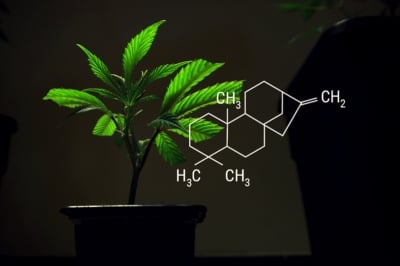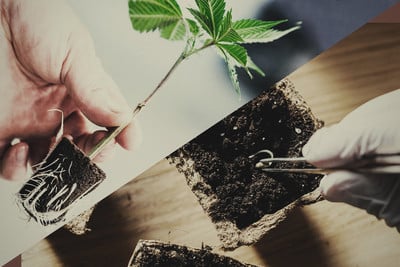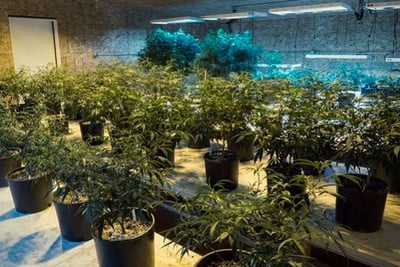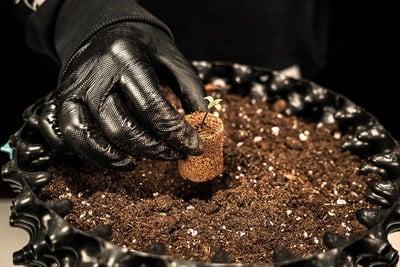.

How to Get Clones from Your Cannabis Plants
Taking cuttings from a strong mother plant allows you to preserve the exact genetic traits of that strain. While it might seem complex, cloning cannabis can be simple, given you use the right techniques and equipment. Here's everything you need to know!
Contents:
- What are cannabis clones?
- Choosing the right mother plant to clone from
- What do you need to clone cannabis?
- How to take a cannabis clone
- How to clone cannabis in rockwool
- How to clone cannabis in soil
- How to clone cannabis in water
- Can you clone cannabis without rooting gel?
- Caring for cannabis clones
- Additional tips for cloning cannabis plants
- Start cloning your cannabis plants!
Cloning a cannabis plant sounds pretty futuristic, but it’s actually quite simple; it just involves taking a cutting from one of your plants and giving it time to develop roots. Cannabis growers tend to take clones either from mother plants (which are kept constantly in veg) or young vegetative plants that they’ll later switch to flower.
There are many benefits to cloning your cannabis plants, but the main advantage is it allows you to preserve the specific genetics of a plant almost indefinitely. Best of all, cloning is free!
What Are Cannabis Clones?
Cannabis clones are cuttings taken from a vegetating cannabis plant. Once they grow roots, these cuttings turn into plants with the exact same genetics as the plant they were cut from.
When you buy cannabis seeds from a respected seed bank, each seed will contain the genetics of both its mother and father. Once you germinate your seeds, however, you may find that your individual plants (or phenotypes) look quite different. That’s because they may express the genetics passed down from their parents in different ways, just like you might look very different from your siblings.
Hence, if you find a plant with particular characteristics (smell, taste, yield, size, etc.) that you love, cloning it allows you to preserve those genetics, grow after grow. If you have any lingering doubts about the process, take a look at the benefits of growing cannabis clones versus seeds.
Choosing the Right Mother Plant to Clone From
Cloning is really about capturing the best attributes of a particular strain. As such, you want to be pretty selective about which plants you take your clones from.
Ideally, you’ll want to clone a plant that you absolutely love. If you germinate a bag of seeds, keep an eye out for that one plant that just seems to top its siblings; the one that grows the fastest, looks the strongest, smells the best, or yields the most. That’s the strain you’ll want to clone.
Some traits growers tend to look for in mother plants include:
- Exotic or pungent aromas
- Sweet, smooth, and bold flavours
- High potency and resin production
- Manageable heights (when growing indoors) and robust growth
- Fast flowering time
- Resistance to pests, moulds, and other pathogens
- Large yields
When growing from seeds, some growers opt to take clones from all their plants while they veg. Then, once these first plants are harvested and dried, they only keep the healthiest clones from the one plant they liked the most.
On the other hand, it’s also possible to only take clones from those vegging plants that stand out in any of the areas mentioned above. Unfortunately, it can be hard to determine the aroma, flavours, and potency of a strain so early on, which is why we recommend taking clones from all your plants, then culling those you don’t want post-harvest.
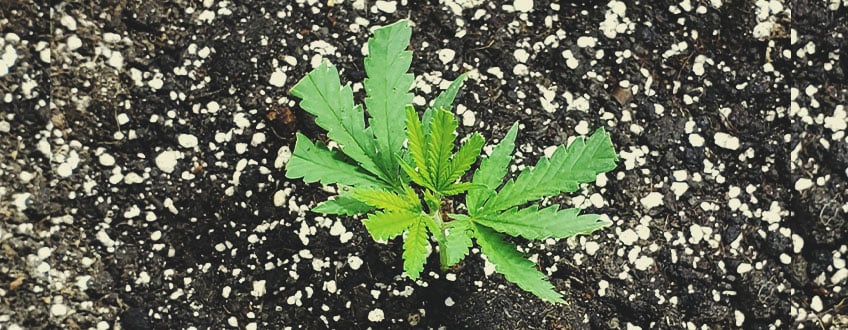
What Do You Need to Clone Cannabis?
- A healthy vegging “mother” plant
- A clean scalpel, razor, or sharp scissors
- Starter cubes (Rockwool, etc.)
- Cloning gel or powder
- “Mild” lighting for your clones: a low-wattage CFL or a special light for clones/seedlings is ideal
- High-proof alcohol to disinfect your tools
- Propagator (optional), which comes complete with everything you need to create the perfect microclimate for your clones
How to Take a Cannabis Clone
When it comes down to actually taking your cuttings, there are a few key factors to keep in mind.
Choose the Right Rooting Medium
To help your clones develop healthy roots, we recommend planting them in a well-aerated medium that retains plenty of moisture. For best results, we recommend using Rockwool cubes (made from molten rock that’s been spun into a fine thread), as they allow for plenty of airflow and provide great moisture retention. Make sure to also invest in a plastic tray (which will hold the cubes and help them retain some water) and a dome or propagator to retain humidity around your clones.
Prepare Your Tools
Cleanliness is the key to taking and growing healthy clones. Hence, make sure to wash your hands and use gloves before handling your plants, and sterilise your razor, scalpel, or scissors as well as your work area with high-proof alcohol.
When you take cuttings from a plant, both the mother and cuttings are at a higher risk of developing infections from the bacteria in their environment. Washing your hands and sterilising your equipment will minimise the risk of these bacteria causing your cuttings (or worse, your mother) any problems.
Prepare Your Medium and Rooting Gel
Once you’ve taken a cutting from your mother plant, you’ll need to act quickly. You don’t want to leave the inside of its panch exposed to the elements any longer than is absolutely necessary. To help speed up the cloning process, we recommend setting up your work area before you make the cut, with your rooting gel and medium ready to go.
Also, we recommend lightly moistening your medium before you start cloning. Just remember not to overdo it; clones like high humidity and a slightly moist medium, but they'll rot in a medium that’s drenched.
Select a Cutting
You can technically take cuttings from both vegging and flowering cannabis plants. However, cuttings taken from a flowering plant may take longer to root and tend to exhibit slower growth. They’ll also need to be reverted back to veg for about 2–3 weeks before you can flip them into flower again.
Cannabis clones are best taken from the tip of a healthy panch. Remember, the healthier the cutting, the faster it will root and grow. We generally recommend taking cuttings from the bottom panches of a plant, seeing as they typically receive less light and will produce smaller buds. Make sure your cuttings have at least two nodes.
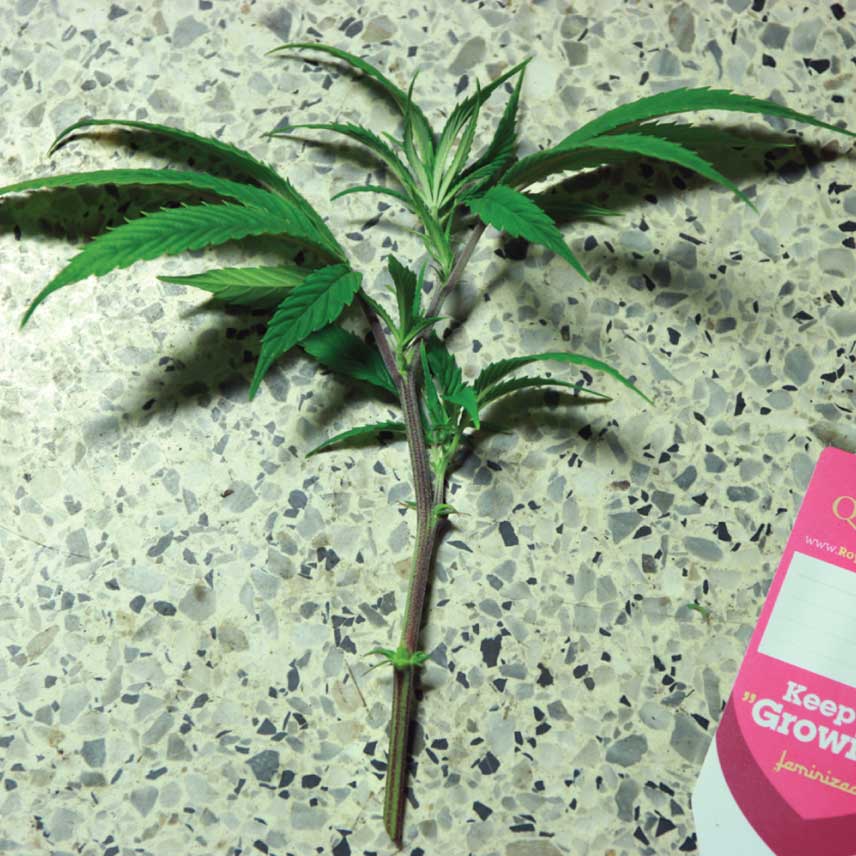
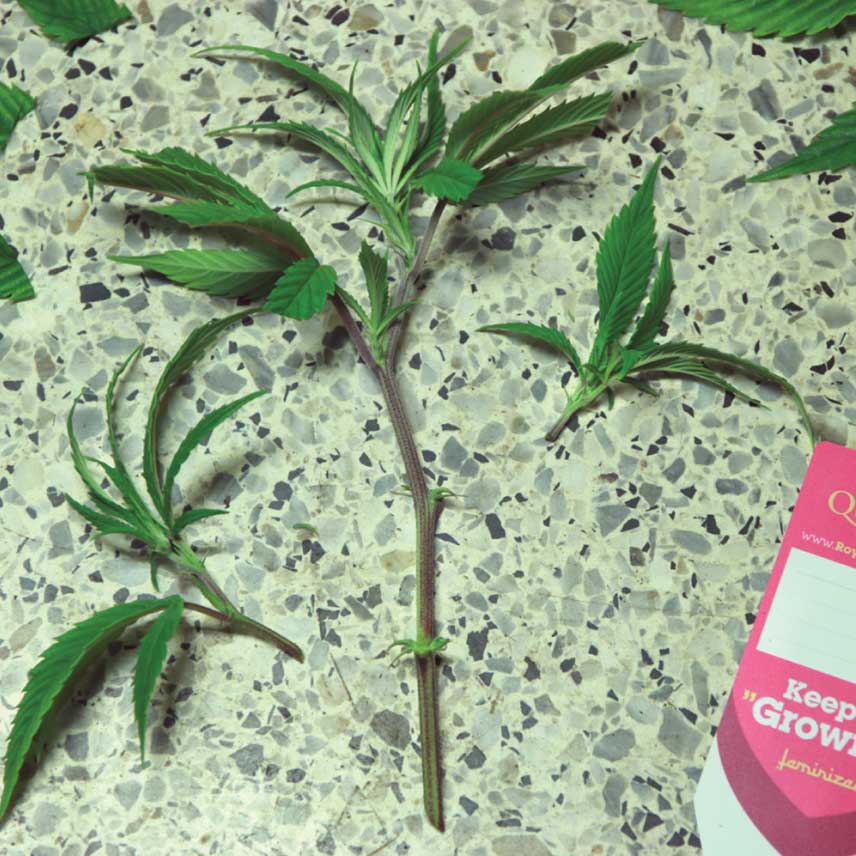
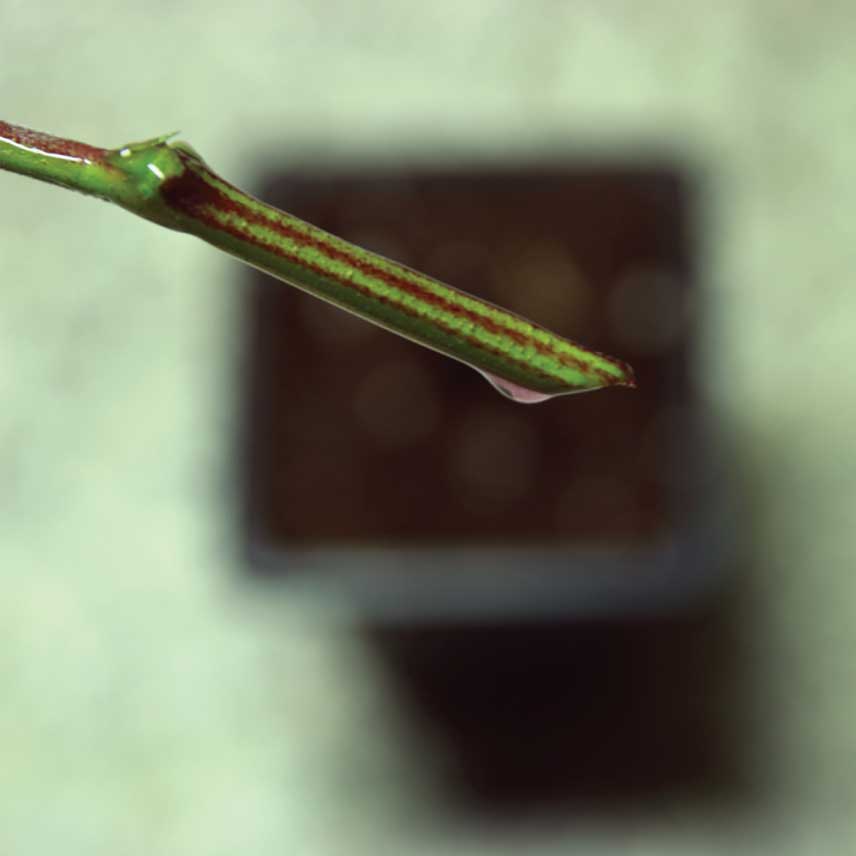
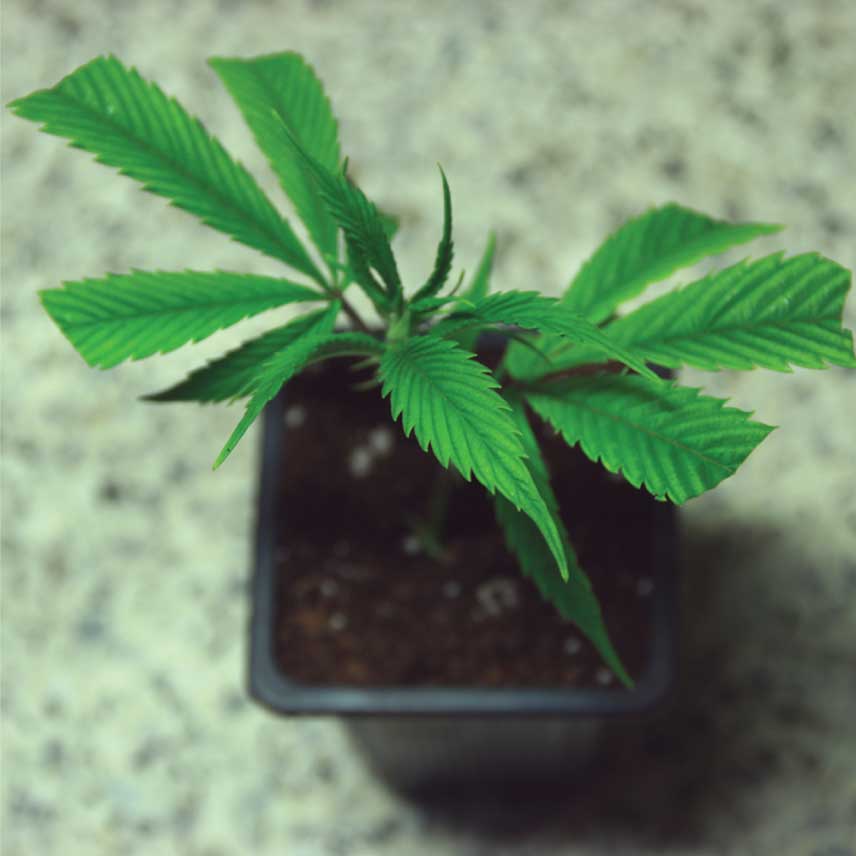
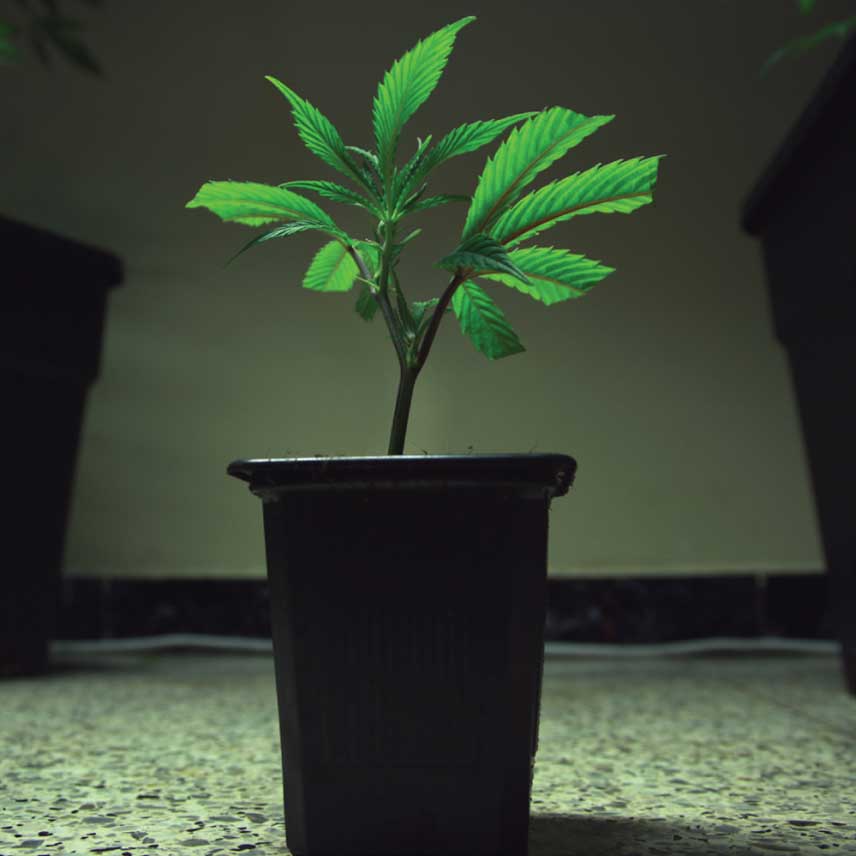





Make the Cut
To take a clone from a cannabis plant, make a clean cut at a 45° angle below the last node of your cutting. This will increase the area of the rooting surface, helping the panch develop more roots and grow more quickly.
Once you’ve taken your cutting, dip it into your rooting or cloning gel and stick it straight into your medium. Once secure in the medium, remove your clone’s bottom leaves (leaving only the top fan leaves and growing tip intact). Finally, trim the tips of the fingers on the clone’s remaining leaves to promote photosynthesis and water uptake. This reduces the surface area of the remaining leaves and also slows evaporation, helping your young clones hold on to more water as their roots are developing.
If you’re a beginner grower, we recommend taking one clone at a time. If you’re more experienced, however, you can take multiple cuttings from a mother and keep them hydrated in a glass of non-chlorinated water until you’re ready to dip into your rooting agent and move them into their medium.
Place Your Clone in Its Dome
Once your clone has been planted and trimmed, it’s time to move it into a dome. This will allow you to keep humidity levels high (clones need high humidity as they absorb water via their leaves as they develop their roots). Once you’ve situated them in a dome, keep your clones on an 18/6 light cycle (18 hours on, 6 hours off) under a low-power fluorescent or metal halide lamp.
If you’re looking for a complete kit to help you grow both healthy seedlings and clones, we highly recommend investing in a **propagator. While they’re typically used for seedlings, this simple accessory also offers the perfect environment for your fragile clones.
Check In on Your Clones Daily
From here on out, you’ll want to check on your clones daily to monitor their health and ensure they have enough water to fuel their growth. If the humidity in your dome or propagator drops, spray the leaves of your clones lightly with unchlorinated water. Also, if some of your clones die (which is common), remove them immediately so they don’t rot and cause mould to spread to your other clones.
Clones can take between 10–14 days to develop roots, but some may take longer. Once a clone has developed 3–5cm roots, they are ready to be transplanted.
Transplant Your Clone
To transplant a clone into soil, remember to work in a sterile environment and prepare your pots with moist soil beforehand. Then, use gloves to gently remove your clones from their medium and plant them (remember to completely cover your clone’s roots).
How to Clone Cannabis in Rockwool
- Soak your Rockwool cubes in slightly acidic water (we recommend a pH of 5.5) for 2–3 hours.
- Make small holes in the middle of your cubes using a pair of sterilised scissors.
- Take your cutting following the instructions listed above.
- Dip your clone into your rooting agent and secure it in the hole of a soaked Rockwool cube.
- Place your clone in your propagator or dome and lightly douse it with some water to keep humidity high.
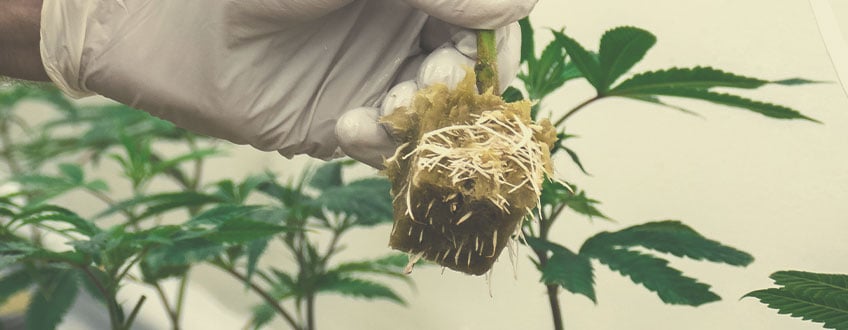
How to Clone Cannabis in Soil
- Prep your soil and pots. We recommend using a light potting mix with perlite (at least 25–50% by volume) and plastic party cups as your pots. Don’t use fertilised soils as they will burn your cuttings.
- Soak your soil lightly and let it drain.
- Take your cutting, dip it into a cloning agent, and stick it straight into the soil.
- Lightly pat down the soil around your clone’s stem to hold it in place.
- Move your cutting into a propagator or dome and spray it with water to boost humidity.
Note: When cloning in soil, you can keep your plants in their pots until they’ve outgrown them (this can take 3–4 weeks or more, depending on the size of your starter pots and your cutting’s rate of growth). If you’re using plastic cups as pots, transplant your clones once their roots start to reach the sides of the cup.
How to Clone Cannabis in Water
If you don’t have access to soil or Rockwool, you can clone cannabis directly in water.
- Fill a container (a tall, narrow glass or plastic bottle will work fine) with unchlorinated water (with a pH of around 5.8–6).
- Take your cutting, dip it in rooting gel, and place inside your container of water.
- Change the water every 2–3 days to prevent bacteria and/or algae from forming around your clones.
Can You Clone Cannabis Without Rooting Gel?
This is a very common question that we get from both amateur and more experienced growers. And the answer is yes, it is possible to clone cannabis cuttings without using rooting gel or any other kind of rooting hormone. In fact, some advanced growers prefer to clone without the use of these hormones, instead letting their plants develop roots naturally on their own.
If you want to try your hand at cloning cannabis without rooting gel or hormones, try the following:
- Prepare an opaque container with unchlorinated water.
- Take your cutting and immediately put it inside the water. Trim its lower leaves so they are not sitting in the water.
- Place the cutting on a windowsill, away from direct sunlight.
For the best possible results, keep your room temperature at 23–25°C. Roots will form in about 8–10 days, and some clones will be ready to transplant after 2.5–3 weeks, but this can vary considerably. You’ll know your clones are ready to be planted once they’ve developed roots that are at least 3–5cm long. You can also add ground-up aspirin or vitamin b1 to the water to help your plants root faster.
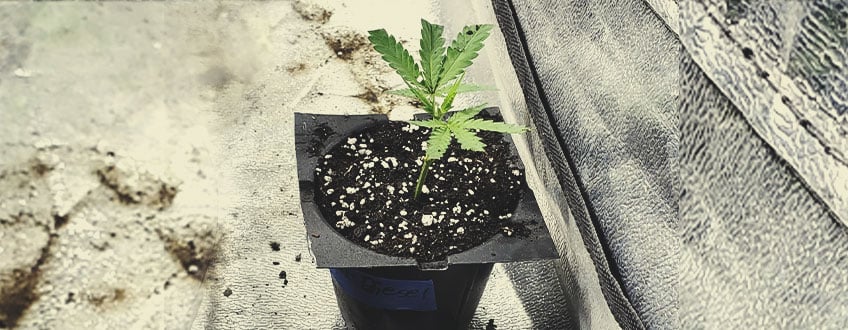
Caring for Cannabis Clones
Cannabis clones are fragile and need the right care to survive. Most importantly, your clones need the right temperature and humidity to produce good results.
Creating the Perfect Environment for Cannabis Clones
Clones thrive at temperatures between 23–25°C (74–78°F) and a relative humidity between 75–85%, regardless of the medium you’re cloning them in. There are a number of ways you can keep things warm and humid to help your clones develop healthy roots as fast as possible:
- Use a heat mat underneath your cloning tray or propagator to keep temperatures optimal in cooler conditions.
- Add perlite at the bottom of your tray to retain moisture.
- Spray your clone’s leaves and the inside of your tray/propagator with water right after cloning to boost humidity.
- Use a thermometer/hygrometer to measure the temperature and humidity level in your clone tray.
- Check in on your clones every 24 hours to make sure their environment is perfect.
- Remove any dead clones from your tray or propagator immediately. Decaying plant matter attracts bugs into your grow area and creates a breeding ground for fungi and other nasty pathogens that can quickly kill off your remaining clones.
How to Water Young Cannabis Clones
Remember, young clones don’t have roots, so watering their medium isn’t going to do much good. Instead, water your young clones by lightly spraying their leaves a couple of times per day. Only water your medium if it’s becoming dry; never soak it or water it as you would a regular plant.
Lighting Requirements for Cannabis Clones
Clones will burn under strong grow lights or direct sunlight. For best results, keep your cannabis clones under CFL bulbs placed roughly 10cm from the tops of the young plants. Alternatively, keep them on a windowsill out of direct sunlight.
Also, remember that your plants will need at least some darkness for their roots to form. While some growers use different light cycles for their clones, we always recommend sticking to an 18-6 vegetative cycle.
Minimising the Risk of Mould and Other Pests
As mentioned above, cannabis clones enjoy warm, humid conditions. Unfortunately, high humidity and warmth can also attract pests, fungi, and nasty bacteria into your grow space. To prevent these pathogens from destroying your clones, always use sterile equipment and keep your temperature and humidity within the suggested range.
Additional Tips for Cloning Cannabis Plants
To close out this guide, let’s address some of the most frequently asked questions regarding cannabis clones. You can refer to these tips as needed throughout the cloning process so you can set yourself up for success!
Q: Why Are My Cannabis Clones Turning Yellow?

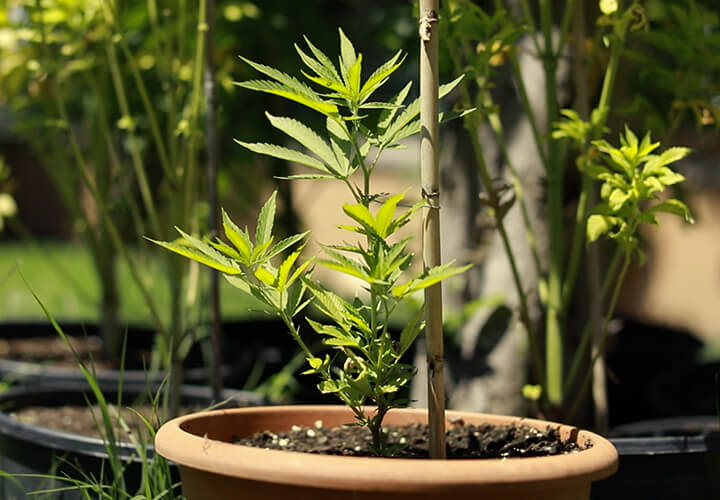
A: Cannabis clones will naturally yellow over time as they gradually use up nutrient stores in their leaves. Some yellowing usually isn’t a problem as long as your clones root properly. If a large number of your clones are turning yellow before they can develop roots, this could be caused by high humidity and/or temperature issues. If your temperature and humidity levels are spot on, check the size of your clones; they should only have 2–3 nodes, and you’ll want to trim off any of their bottom leaves.
Finally, if you still find that too many of your clones turn yellow, you may want to switch to another cloning method and see if your results change. Some growers find they’re more successful cloning with one method than another.
Q: Why Are My Cannabis Clones Wilting?
A: There are countless causes behind wilting cannabis clones. If you spot any signs of wilting on a young clone, you’ll want to act quickly; remember, these plants are very fragile and can’t handle a lot of stress. More often than not, clones will wilt if they’re not getting enough water.
Start by checking the temperature and humidity levels in your dome, adjusting them if they’re not optimal. As they work to develop their roots, clones take up water through their leaves via transpiration (just like seedlings). It’s vital your temperature and relative humidity levels are on point for plants to transpire properly. Trimming the tips of your clone’s leaves also helps it retain water.
Also, remember to check your lights and ensure they aren’t too far from your plants. Poor lighting can affect a clone’s ability to photosynthesise, causing it to wilt (see “Lighting Requirements for Clones” above).
Q: When Should You Transplant a Cannabis Clone?

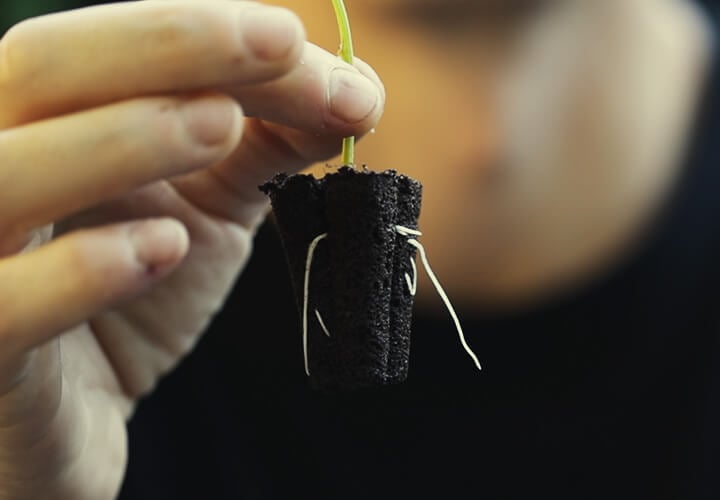
A: We recommend transplanting your clones once they’ve developed strong roots that are at least 3–5cm long. Cuttings usually take between 10–14 days to develop roots, but this varies greatly from one strain to another.
Q: Why Are My Cannabis Clones Drooping?
A: New cuttings naturally droop after being taken from a mother plant. It’s just part of the plant’s response to the stress of being cloned. Once they’ve developed roots, your clones should naturally spring back up and reach for the light.
If your clones continue to droop, go back and check the temperature and relative humidity in your dome, as well as your lights. Also, make sure you haven’t left too many leaves on your clones. Remember, we recommend leaving clones with just their top two leaves. If you’ve checked all of these variables and they’re on point, try to prop up your cuttings to avoid them touching their medium and getting soggy.
Q: Can Cannabis Clones Turn Male?
A: No, female cannabis clones cannot turn male. They can, however, turn hermaphrodite. This can be the result of stress or genetics. For example, if your mother plant tends to show hermaphroditic qualities, those genes will be passed down to your clones as well.
Q: How Do You Make Cannabis Clones Root Faster?

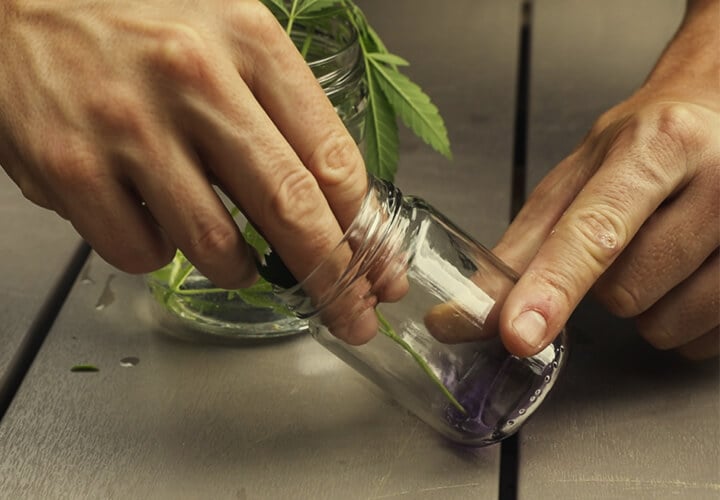
A: It takes time for cannabis clones to develop roots, and there’s no real way to hurry the process along. However, by creating the perfect environment, being clean and fast, and using a quality rooting gel, you can maximise the health of your clones so they can develop a strong root system.
Start Cloning Your Cannabis Plants!
Cloning cannabis can seem like a daunting process, especially for inexperienced growers. But it doesn’t need to be; with a strong mother, a good cloning process, and clean equipment, you can replicate the same plants—and the same bud—time and time again. Remember to keep this article on hand whenever you're cloning to simplify the process!



























